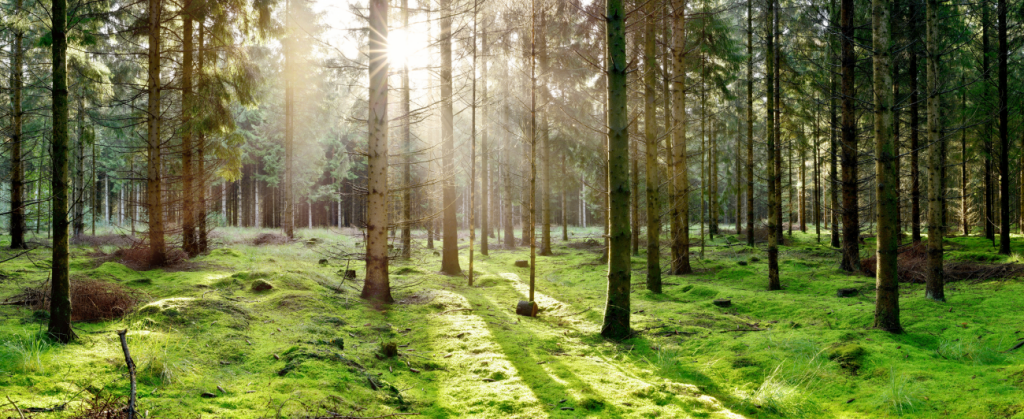The enormity of global warming can be daunting. What can any singular person, or even a country, do to fight climate change?
We can and must change our lifestyles, but this alone won't be enough to stop temperatures from rising. The science is clear — to have a chance of staying below 1.5°C, we must do everything we can to reduce our carbon footprint and, on top of that, actively remove CO₂ already in the atmosphere. Specifically, we need to extract billions of tons of CO₂ between now and 2050, and we need all the help we can get to do this. To halt climate change, we need all carbon removal solutions* to work together; nature and technology hand in hand.
* Carbon removal is the process of capturing carbon dioxide from the atmosphere and locking it away for decades or centuries.
Let's discover some of the most effective carbon removal solutions:
Direct air capture, our technology
Direct air capture (DAC), as the word implies, is a technology that captures carbon dioxide directly from the air and, when combined with storage (DAC+S), stores the captured CO₂ deep underground.
This technology can be used anywhere in the world, and storage is achieved via a natural geological process. Once captured, the CO₂ is transported deep underground, where it mineralizes in geological formations and remains for more than 10,000 years — that's why it's described as a permanent solution.
How is DAC+S different from CCS?
Direct air capture and storage (DAC+S) removes CO₂ directly from ambient air. In contrast, carbon capture and storage (CCS) captures CO₂ from point sources of carbon dioxide, such as the smokestacks of iron and steel factories. It then transports the captured CO₂ to a storage site, where it is sequestered.
Let's take a closer look at how the two technologies differ:
How the technology works:
DAC+S: Removes CO₂ from ambient air, even historic CO₂ released during the industrial revolution, reducing overall levels in our atmosphere.
CCS: Maintains the current level of CO₂ in our atmosphere by preventing further emissions, e.g., those emitted by factories.
Where the technology can be used:
DAC+S: Can be used anywhere as CO₂ is distributed equally across the atmosphere.
CCS: Can be used at stationary sources of CO₂ such as power plants, ethanol production plants, or other industrial facilities.
How do they address climate change?
DAC+S: Removes carbon dioxide from the air, allowing the removal of unavoidable or historic emissions already in the atmosphere.
CCS: Prevents new quantities of CO₂ from entering the atmosphere.
Afforestation, planting more trees
Trees are an excellent natural solution because they reduce the amount of CO₂ in the atmosphere by absorbing it and storing it for long periods of time. Some trees store carbon for many centuries!
But here’s the flip side of the coin:
Trees are vulnerable to fire and disease, and once cut down or rotting, they release all the carbon dioxide they’ve captured up until that point.
A tree can only store CO₂ over its lifetime (average ~100 years).
Reforestation requires a great deal of water, and, most importantly, time. Young trees take in far less CO₂ than mature ones, and that means it could take decades to absorb the required levels of CO₂ this way.
Trees need a lot of area: We would need huge areas filled with new trees – land the size of Europe or twice India.
Protecting and enhancing our forests to ensure that they continue to serve as natural carbon sinks is of the utmost importance. But pinning our hopes solely on tree planting is not enough.
Bioenergy with carbon capture and storage
To prevent CO₂ from biomass, like trees, ending up in the atmosphere, they can be burned in a power plant so that the released CO₂ is captured and then buried. This process is known as BECCS and allows for energy as a secondary activity.
Why has it not yet been implemented on a large scale?
To achieve the required level of CO₂ removal, this process would require 25-46% arable land — more than twice the area of India and half the current global arable land.
The required levels of water and fertilizer needed are very high and could take away from food production.
Care must be taken with this solution so that CO₂ emissions from the growing, harvesting, and processing of biomass don’t outweigh the total carbon captured.
Enhanced weathering
Enhanced weathering is a technology that accelerates the natural weathering of rocks by mimicking the process. In fact, rocks exposed on the earth's surface absorb carbon dioxide from the atmosphere and, in the presence of water, transform it into other compounds, retaining the CO₂ for a long time.
The solution accelerates this process by spreading finely ground rock over the land (farmland, beaches, forests, etc.). In doing so, the rock surface exposed to the atmosphere is expanded, making more rock available to absorb carbon.
Benefits include improving degraded soils and plant growth, and helping to reverse ocean acidification. But there are a few open questions:
Scientists suggest that rapid uncontrolled changes in pH, carbonate saturation state, and dissolved aqueous CO₂ could affect ocean ecosystems.
Although this process mimics a natural process, it’s not natural in itself. The substance used is released into ecosystems at much higher rates than normal and could create "dead zones," areas where oxygen levels are too low to support life.
See below a comparison of the solutions we briefly analyzed.
These are only some of the available solutions, and all of them must be carefully evaluated. All the options need to be considered as a matter of urgency, including how to scale them up and how best to use them to fight climate change.
Lead the race toward net zero
High-quality carbon removal for your climate strategy.

